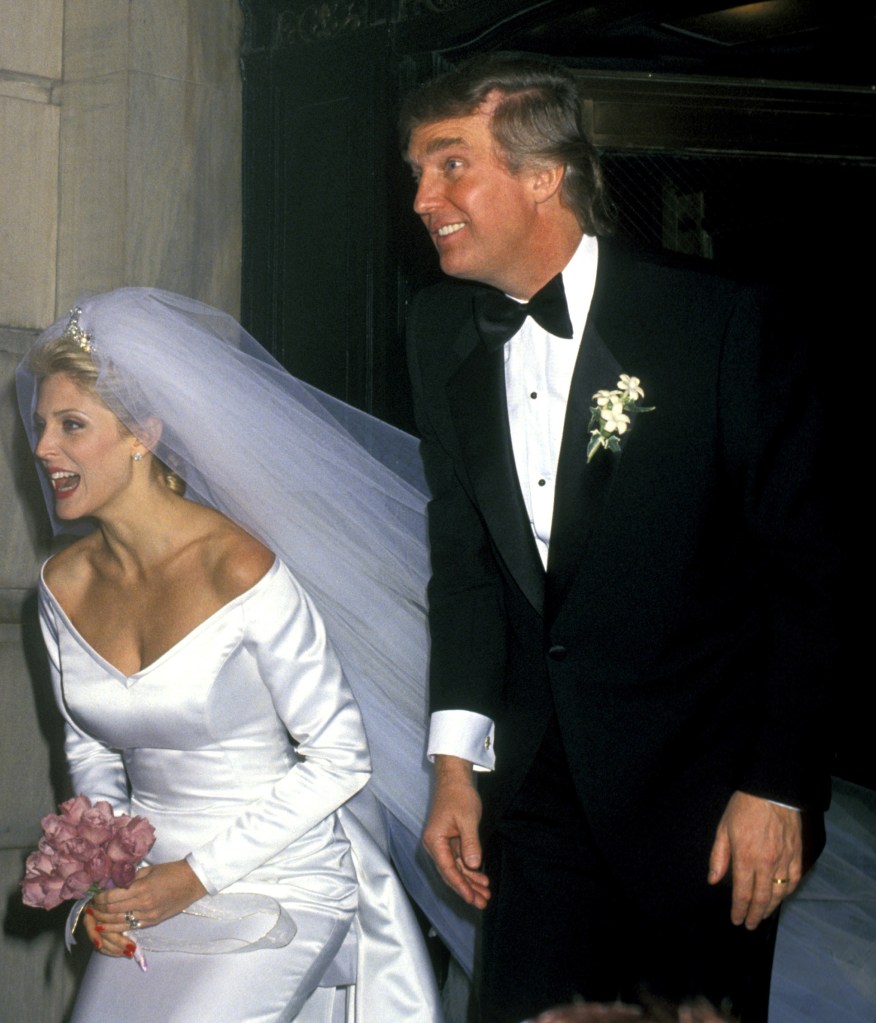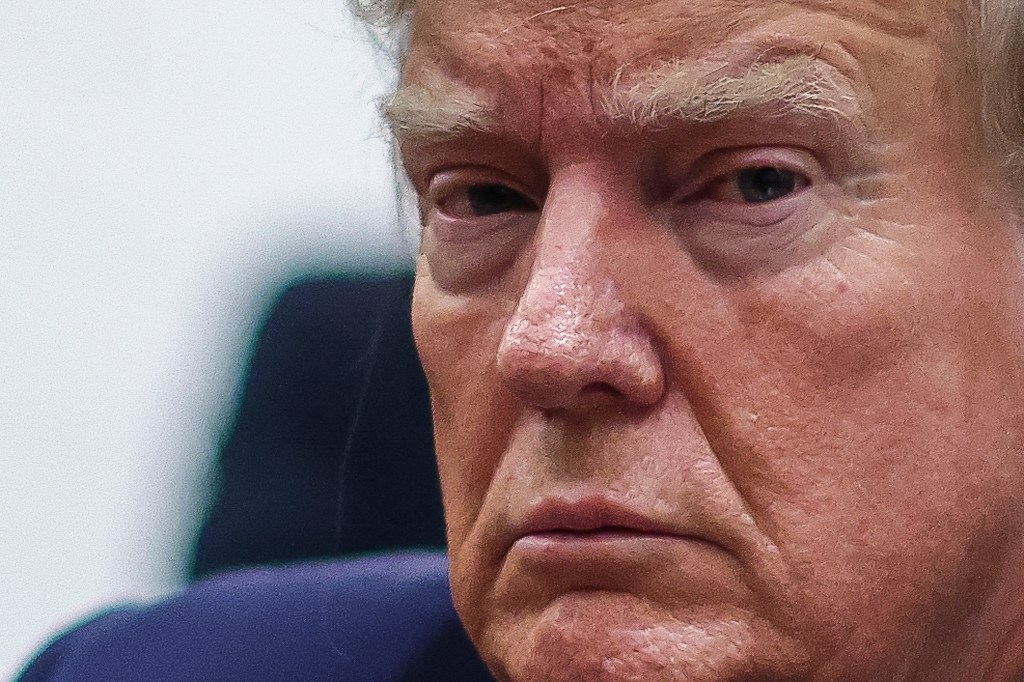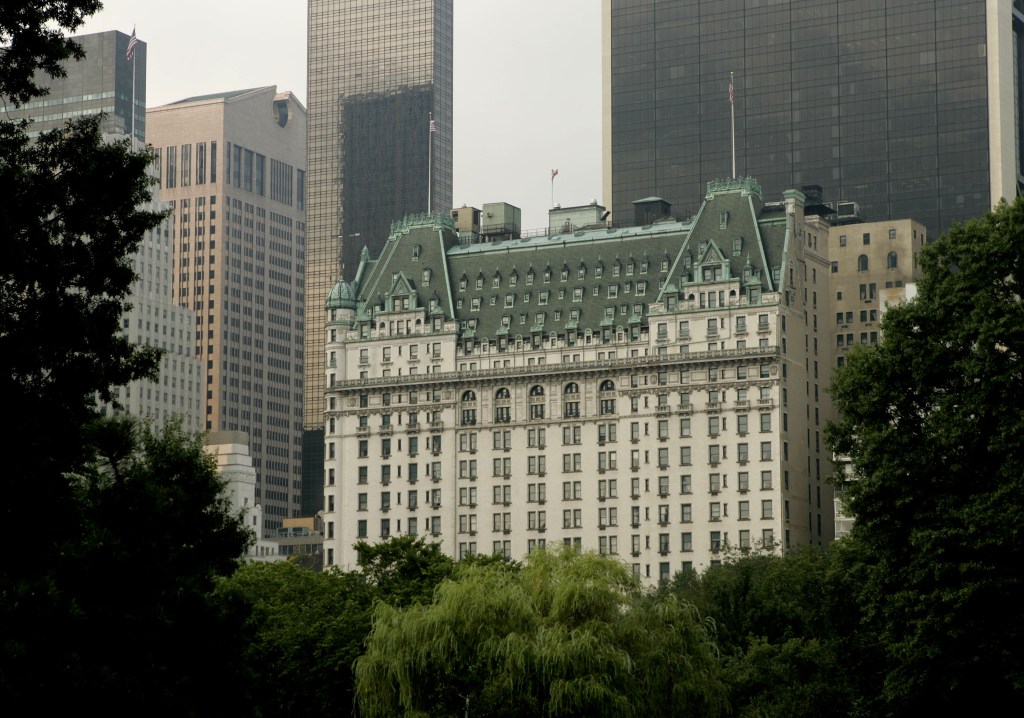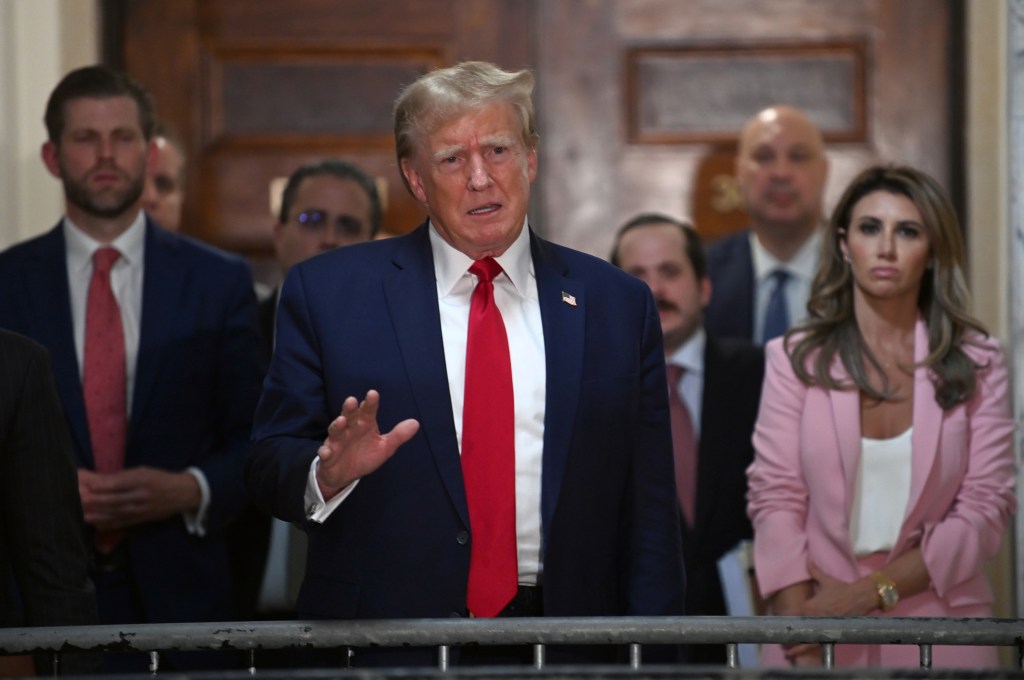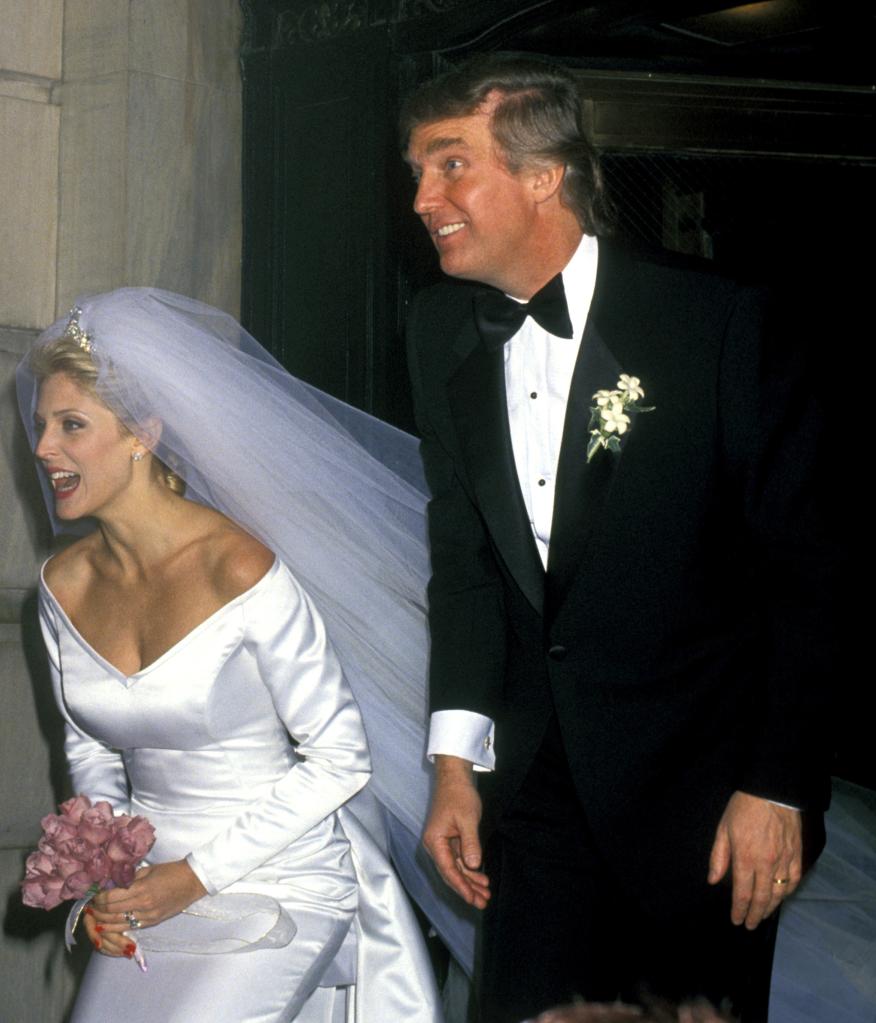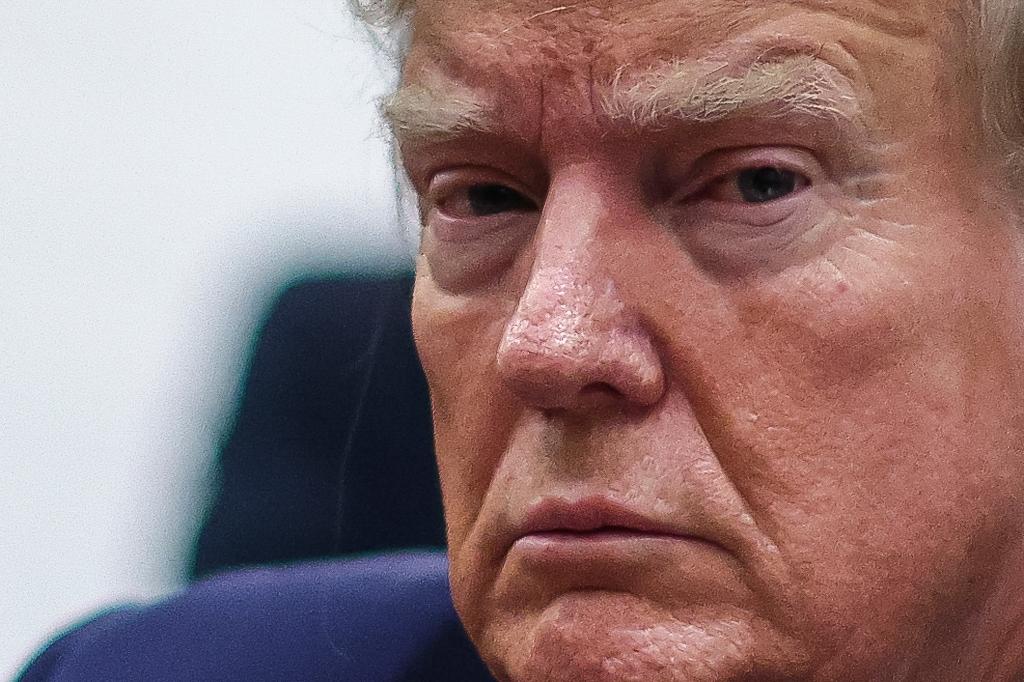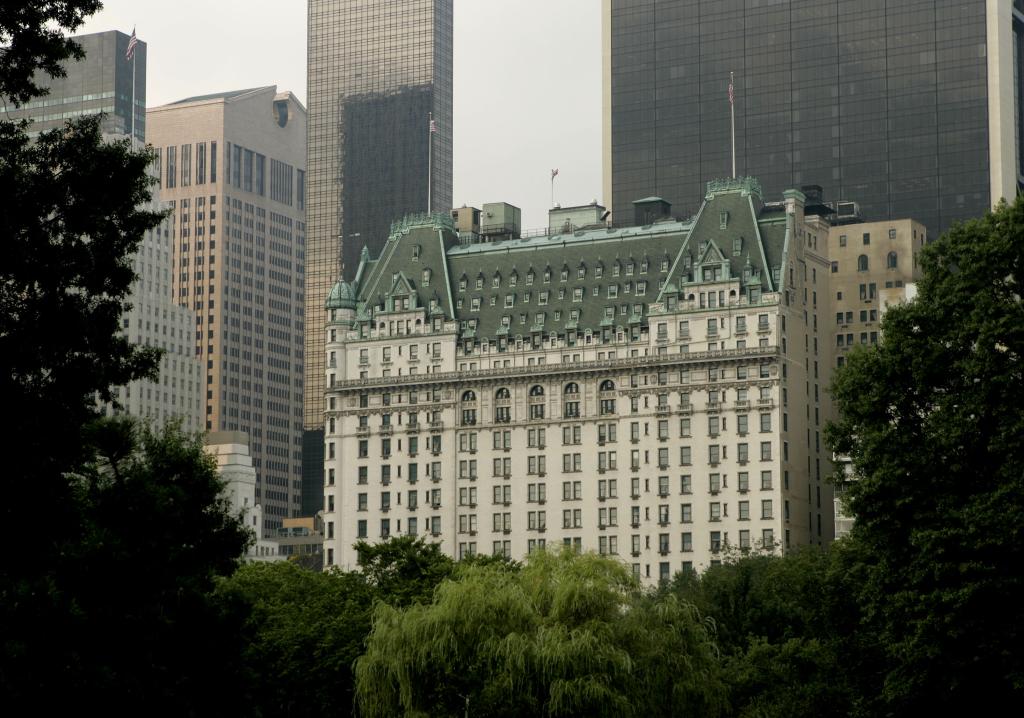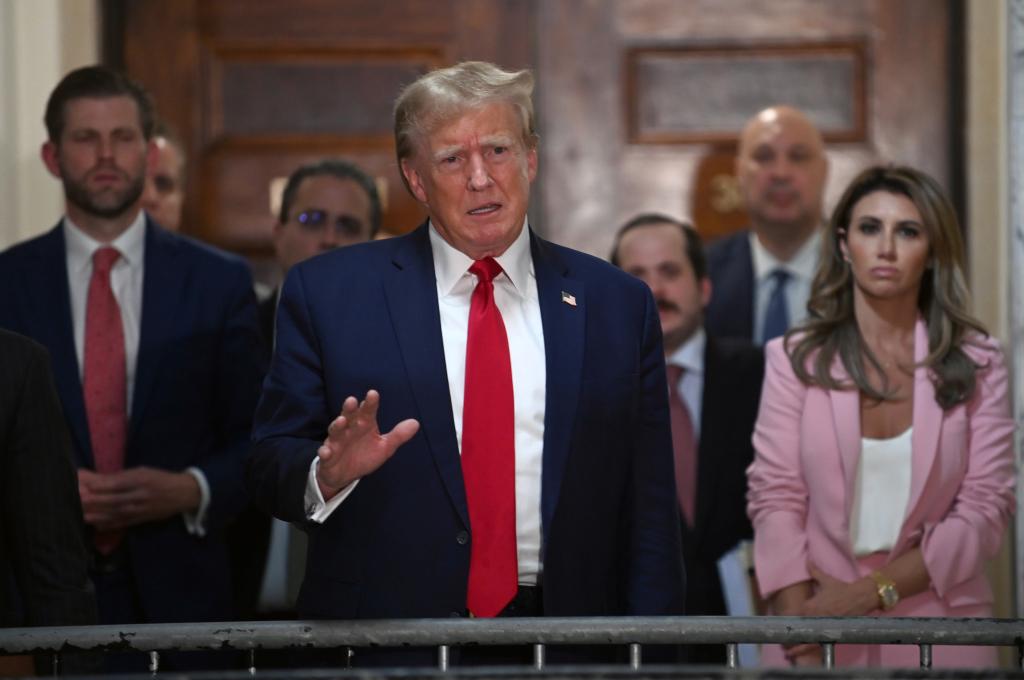Donald Trump bluffed his way out of bankruptcy in the 90s — will this come back to haunt him during NY fraud trial?
Contact The Author
Exaggerator-in-chief Donald Trump inflated his net worth to narrowly wriggle out of personal bankruptcy in 1990, according to sources and financial records seen by The Post.
Those who previously worked with him say his current $250 million civil fraud trial in New York over apparently doing the same may see him get his just desserts.
“All of the fraud trial rings true,” a lender who helped save Trump in the 90s told The Post, saying the former president certainly had a pattern of exaggerating his net worth.
“He gave very rosy projections,” a second lender who saved Trump in 1990 said.
“Did he push the outside of the envelope? Yes.”
Trump, 77, faces a reckoning in court today when a judge decides if he and his sons inflated his net worth to get more favorable rates from banks and insurance companies.
If he loses, he faces fines up to $370 million and being barred from doing real estate business in the whole of New York state.
Back in the 80s The Donald was also taking financial risks and trying to overvalue his assets — with disastrous results.
Trump paid $407.5 million for The Plaza Hotel, the most iconic in New York, in 1988.
Amazingly, he borrowed $425 million to finance the purchase and put down none of his own money.
Part of it, $125 million, was a personal guarantee which he was on the hook for if the risky deal went south.
Lenders believed his personal worth would cover the loans.
Some of those very close to Trump advised against making personal guarantees but it was the only way for him to get the deal done, a source close to his family said.
“He did it against his own lawyer’s recommendation,” the source said.
In roughly a year, Trump could not even afford the interest on the Plaza loans or those against his other recently acquired properties including the Trump Shuttle airline and Regency Hotel in Atlantic City.
Lenders including Bankers Trust, Chase, Citicorp, Manufacturers Hanover, and Midlantic Corp. held loans at most of Trump’s properties and had a right to force him into personal bankruptcy and liquidate his assets thanks to the personal guarantee, sources said.
“This got extremely close to personal bankruptcy,” the second lender made clear.
By 1990, Trump was in default on the properties.
Trump wanted a new $125 million personal loan so he could make his interest payments.
In 1990 the Trump Organization hired a chief financial officer for the first time, choosing Stephen Bollenbach to help negotiate with lenders.
“Donald would call the banks constantly and say how much The Plaza was really worth,” the first lender said.
“He said when rooms were converted to condos they would sell for $1,000 a square foot and we would all laugh,” the source said, believing it was outrageous.
He never got the right to convert the rooms into condos.
“Trump thought I’ll borrow $125 million on my own name and I’ll make the Plaza which has only $10 million of net operating income grow and it will produce enough to pay for the mortgage and all these personal loans,” the first lender said.
The stakes were high.
“Bankruptcy would have been a real, real taint,” the second lender said of Trump, who only a few years earlier had published The Art of The Deal in 1987.
“It would have been much tougher for him to sell his brand.”
The banks stayed tough in the negotiations, and basically would only lend him the money if they got to repossess his assets, the lenders said.
Essentially they would get the same rights they would receive in a bankruptcy.
Talks got tense.
“When Donald said he needed $1 million a month for expenses, an [Orthodox Jewish] lawyer got up and said, ‘Donald, shut the f—k up’ and he sat down,” the second lender said.
The lenders believed there was some value to having the world still think Trump owned these assets, so they did not force Trump to declare personal bankruptcy if he accepted their terms.
“We said you do this or we foreclose on your assets,” the first lender said.
Trump saw the long game and eventually accepted the conditions believing correctly that when the economy recovered and with his name intact he would rebuild his reputation.
He agreed in 1990 to what today would be called a Debtor-In-Possession (DIP) loan, typical in corporate bankruptcies, but got to avoid personal bankruptcy.
Four of Trump’s companies have declared bankruptcy but he has never personally gone bankrupt.
“Essentially this was a DIP loan,” the first lender said.
“The expectation was he was going to sell assets.”
The banks then divvied up his assets among themselves.
After that, Trump started acting like nothing happened.
In 1991 he paid $250,000 for a Harry Winston seven karat engagement ring for second wife Marla Maples.
“When he bought Marla the ring, we said that’s our money!” the first lender said.
Trump was not obeying the lender-imposed monetary gag order since they, unknown to the outside world, controlled his assets.
The lenders in 1992 refinanced The Plaza Hotel saying publicly that Trump maintained a 51 percent stake in the hotel and the rest went to lenders.
That was not the truth.
“We said this for him to save face,” the first lender said, explaining that Trump would only get a stake after all creditors were paid in full, which was highly unlikely.
A Citicorp representative became the president of the Plaza Operating Trust, sources said, and was Trump’s boss.
“Donald wanted an allowance at the Plaza’s Oak Room restaurant so he could still have a table,” the first lender said.
The lenders at this point would not allow Trump to owe more than $155 million in total so capped the money that he could borrow against his personal Plaza Hotel guarantee and the DIP loan, the first lender said.
Never Miss a Story
Sign up to get the best stories straight to your inbox.
Thanks for signing up!
Trump continued to live by his own rules.
“He invited me to his 1993 wedding to Marla Maples at The Plaza,” the second lender said.
“By the time of the wedding the Plaza had real problems.”
There were issues about how much money Trump needed each month to operate.
“I was saying to my bosses. We are going to sue this f*cking guy, how can we be going to his wedding?
“I got an invite but didn’t go. No way.”
Some of the lenders instead went and enjoyed the glitter.
Marla wore a $2 million tiara with 325 diamonds.
Donald reportedly served $60,000 worth of caviar, and had a six-foot vanilla wedding cake.
The lenders did not sue Trump but sold his properties.
Citicorp sold Trump’s Princess yacht in 1991 to Saudi Prince Alwaleed bin Talal al Saud, one of Citicorp’s biggest shareholders, for roughly $20 million, resulting in about a $10 million loss for Trump.
Trump had bought the yacht in 1988 from Adnan Khashoggi, uncle of the late Washington Post reporter Jamal Khashoggi.
The sale to Alwaleed was Trump’s first known deal with the Saudis.
Prince Alwaleed partnered with Singapore-based chain CDL Hotels in 1995 also bought the Plaza Hotel in exchange for paying off its loans and giving lenders some upside.
Chemical Bank in 1992 took over Trump’s Regency Hotel.
Chase took over the mortgage for commercial and retail space in Trump Tower, and Trump’s West Side rail yards as collateral.
USAir in 1991 agreed to take control of the Trump Shuttle airline.
Steven Ross’ Vornado in 1995 bought Trump’s shares in the Alexander’s retail chain.
Separately, bondholders in the Trump Taj Mahal led by Carl Icahn in 1991 agreed to a pre-packaged bankruptcy in which they got control of the mammoth casino.
Banking expert Michael McCarty said during the Trump fraud trial that Trump gained $168 million in benefits from getting better interest rates when he personally guaranteed his loans in more recent deals including buying the Old Post Office in Washington DC, the Doral Golf Resort & Spa, and 40 Wall Street.
Whether Trump can wriggle out of these personal guarantees without losing his license is yet to be seen, but he suffered a blow Wednesday when the judge ruled he would not be allowed to give a statement at court in his defense during closing arguments.








